While it may not be the right fit for every HOA or homeowner, artificial turf does promise the look of a perfectly manicured lawn throughout the year without the maintenance hassle. But how much does this convenience cost? Let's dig into the world of artificial turf and uncover the factors affecting its price tag, the types available, and cost-effectiveness of the option compared to natural green grass.
The Average Cost of Artificial Turf
The national average cost to install artificial grass is $4,259 for 630 square feet of premium spike-proof, non-directional, UV-stabilized artificial grass turf. (Say that three times fast.)
Most homeowners can expect an average range of $3,000 to $7,500. This includes the cost of the turf and the labor costs for professional installation. These figures vary based on where you live, so it's a good idea to get quotes from local turf installation companies. Apart from location, several other factors affect the cost to install fake grass in your yard.
What Influences Artificial Grass Installation Costs?
Curious how much artificial turf costs and why? Here are a few key factors.
Yard Size
The more ground you need to cover, the more turf you'll need, so the higher the cost. The cost of labor can go up with a larger yard, too, since covering that extra space means more time and manpower.
Location
Lawns aren’t the only places to use fake grass. It's common to find it on decks and patios, near pools, and in play areas and sports fields. A smaller area (like a balcony) means lower costs, but a tougher-to-reach space like a rooftop terrace may be more expensive for a turf installation.
Features and Add-ons
UV protection: Your lawn needs sun protection too. Too much sun can cause fake grass to fade and weaken. You can extend the life of your fake lawn by choosing UV-protected turf that's more resistant to sun damage. Expect UV-protected turf to cost around 10% to 15% more than regular artificial turf.
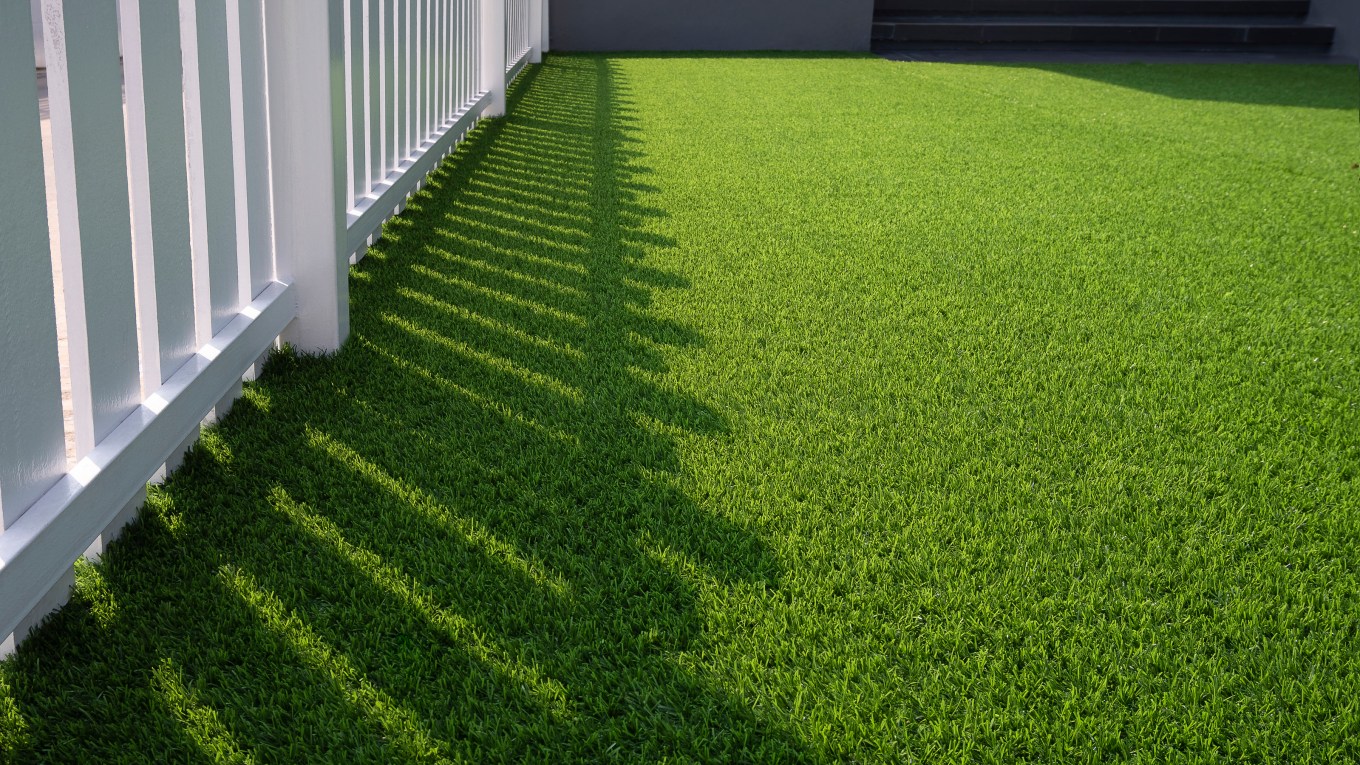
Shock pad: Do you or your kids enjoy playing sports in your yard? A shock pad can make playtime and games safer. These foam pads offer a cushion to help reduce impact and injury from falls (and give your knees a break if you’re bouncing around with the little ones). Shock pads can cost an additional $1 to $2 per square foot.
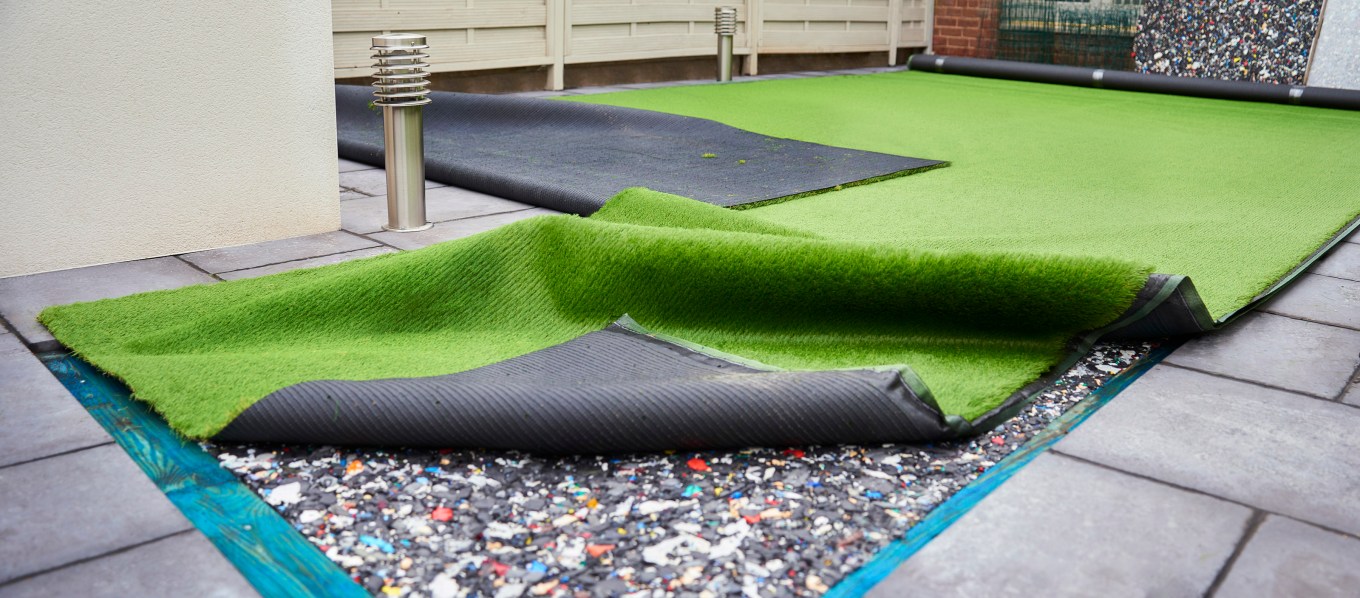
Odor reducer: Pet owners may benefit from odor control solutions to keep their lawn smelling good. Chemical sprays can help neutralize unwanted smells, and odor-control infill absorbs unpleasant smells from pet urine. So, if your garden's aroma is more eau de pooch than fresh-cut grass, these products will increase the project cost (around $15 to $85 for a one-gallon jug or a 40 pound bag,) but will help you win the sniff test.
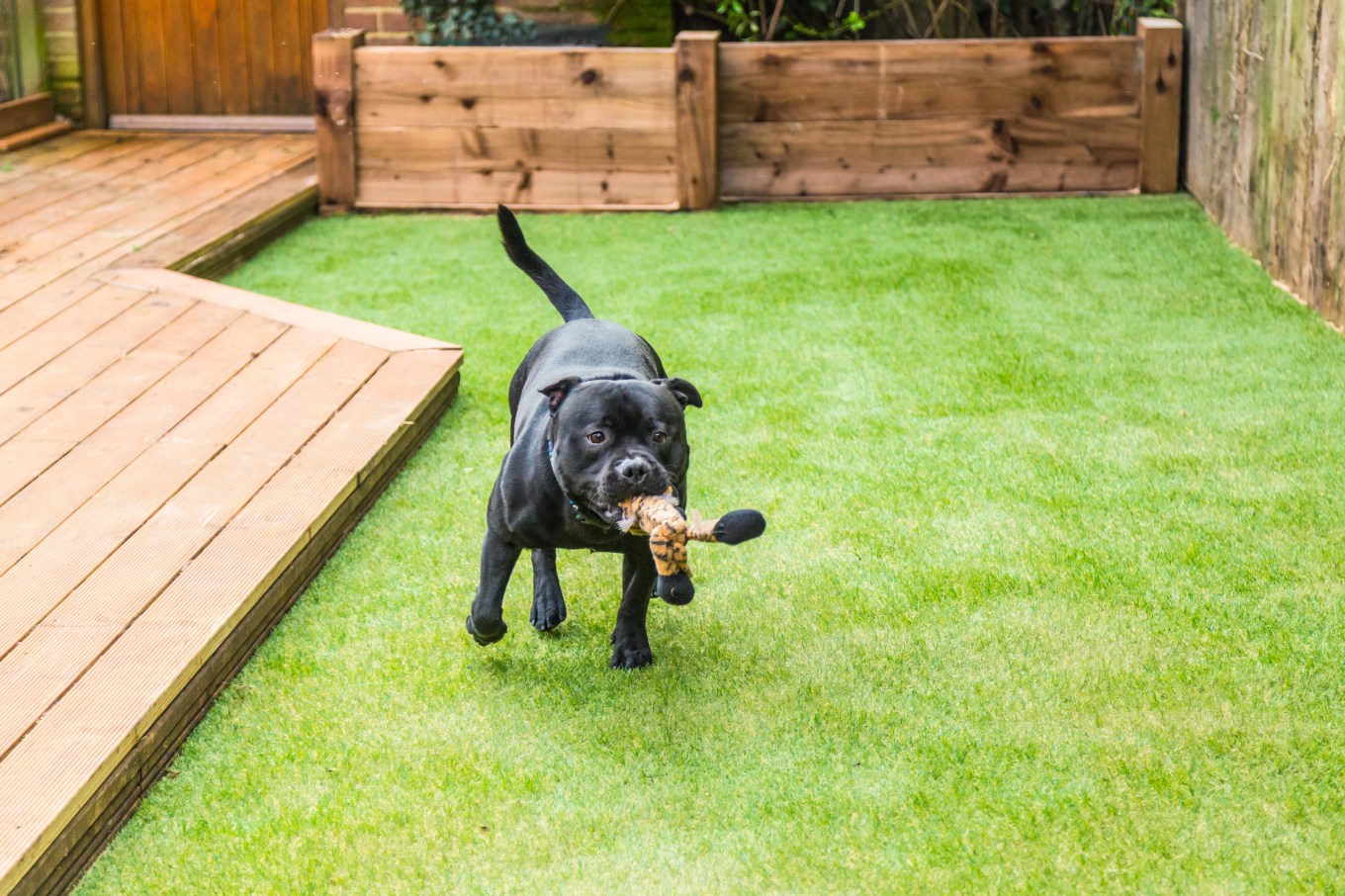
Landscaping costs: Before placing the turf, installers may recommend a thorough yard cleaning or tree stump removal, which adds to your costs. Once installed, it can look tidier with a plastic or metal border called edging. Typically, homeowners can expect to spend $2 to $10 for each linear foot of plastic edging and $5 to $20 per linear foot of metal edging. If you have any other landscaping plans tack those costs onto your project budget.
Brands
Different manufacturers offer varying qualities of artificial turf, with some brands commanding higher prices because they’re more durable and realistic. You may find variations in style, quality, warranty, and even availability based on the brand. Turf prices start at around $1.50 a square foot and extend to around $11.50 a square foot.
Types of Artificial Turf: Costs and Differences
From the shape of the blades to the types of materials used, there's a wide world of variety. Here are materials you can choose from.
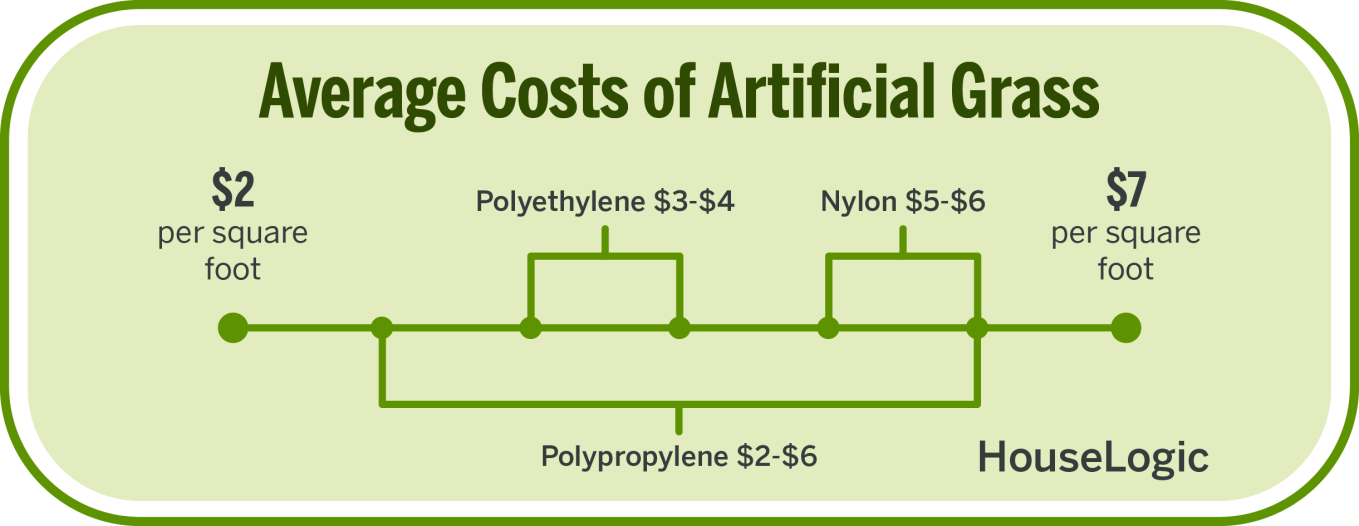
Polyethylene
This type of turf is known for its soft texture and natural appearance, making it popular with homeowners. Prices for polyethylene turf typically range from about $3 to $4 per square foot. Polyethylene is the least expensive option for turf-seekers, but you'll compromise slightly on durability. It’s less resilient than other materials, so it's best for low-traffic areas.
Polypropylene
Priced at $2 to $6 per square foot, polypropylene turf is pliable, light, and smooth. It strikes a balance between affordability and durability. Polypropylene fake grass isn't the most natural-looking option, though, and it may not tolerate extreme weather well.
Nylon
Nylon grass is sturdier and more durable than other options, great for playgrounds and high-traffic areas. It also has a natural look that might make your neighbors do a double-take, wondering, Is it real, or is it fake? These features come at a cost: Nylon turf will set you back by $5 to $6 per square foot.
When buying artificial turf, you should also consider factors like the shape of the grass blades, the quality of the materials used, the height of the grass, and the color. They may influence the cost of artificial turf in big and small ways.
Is Fake Grass Cheaper Than a Natural Grass Lawn?
Now, let's tackle the million-dollar question: Is artificial turf more cost-effective than maintaining a natural grass lawn or other ornamental grasses?
It really comes down to whether you want to trade a more expensive upfront installation for less maintenance and upkeep costs down the line. The initial investment for artificial turf is typically more expensive, especially when factoring in installation costs. However, weighed against the long-term expenses associated with maintaining a natural grass lawn such as watering, mowing, fertilizing, and pest control, artificial turf starts to look like a more financially savvy choice.
As you might expect, artificial turf lawns require minimal upkeep, certainly compared to a natural grass lawn. This saves you time and money in the long run. Plus, it stays green and lush year-round, regardless of weather conditions, eliminating the need for costly lawn treatments to revive brown patches or combat weeds.
However, artificial turf can be subject to wear and tear over time, including discoloration or torn and split fibers. Although it typically comes with a warranty ranging from 10 to 15 years, you may face further reinstallation or upkeep costs if you plan on staying in your home longer than that.
Are Fake Grass Costs Worth It?
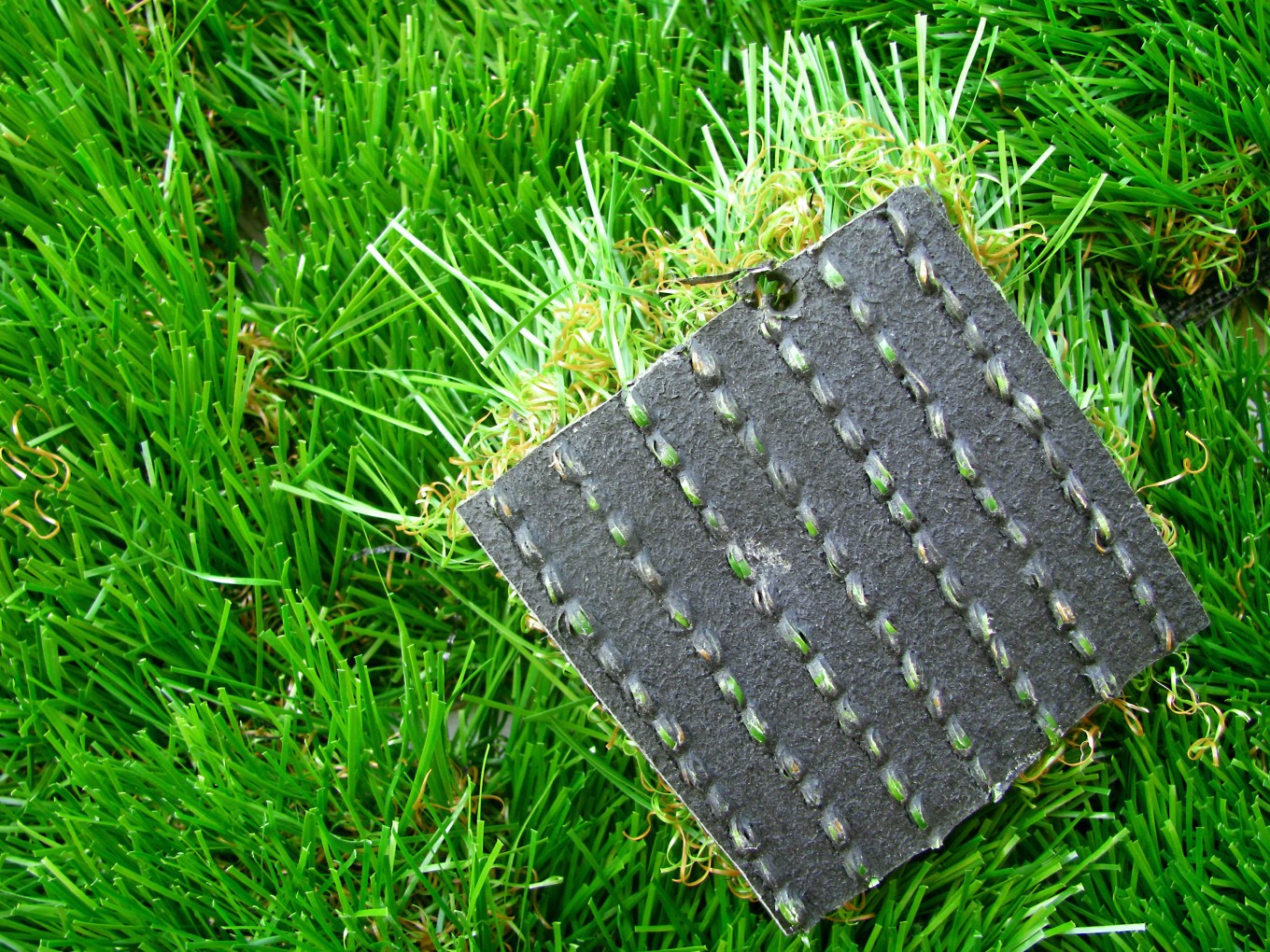
If a homeowner’s interested in installing artificial grass, they’ll first have to find out whether their city or neighborhood will even allow it. Some cities and neighborhoods in California, for example, have banned artificial turf due to growing concerns regarding forever chemicals and microplastics. What’s more, some homeowners may not be able to use fake grass due to HOA rules and regulations.
After these practical considerations are addressed, choosing between natural or artificial grass for your outdoor space ultimately comes down to your personal preference as a homeowner. Once your artificial grass is installed, it requires almost no maintenance or lawn care, vs. a traditional grass lawn. However, the upfront cost may be high if you're living in a starter home that you intend to move out of in a few years. Some homeowners delight in the prospect of zero yard work, but others may miss the natural feel of real grass.
In locations like Las Vegas, artificial turf has gained ground. Nicole Terry, REALTOR® at the Terry Group in Las Vegas, transitioned from grass to artificial turf over the 10 years she has lived in Henderson, Nev. She lists some of the benefits in addition to lower water bills:
- Rebates: Southern Nevada Water Authority is giving rebates for those who transition from grass to desert landscaping, which includes artificial turf, she says.
- No degrading of concrete: Artificial turf doesn’t degrade the surrounding concrete the way sprinklers affect the concrete near real grass. “So, the turf keeps everything a little bit nicer and cleaner.”
- A realistic look: There are more varieties now, and turf looks more realistic. “I have turf that has an underbrush, so it has some brown and looks more natural.”
Although artificial turf has become more popular in her market, not everyone is an instant fan, Terry says. “When I deal with clients who are moving in from other areas, they will kind of snub their noses at artificial turf.” Over time, homeowners may become more acclimated. She adds that she hasn’t seen a difference in home sales prices or appraisal values based on grass versus artificial turf.
If you're leaning toward artificial turf, start by getting quotes and weighing the pros and cons to make sure it's the right move for you. And, if you're dreaming of a low-maintenance yard without fully committing to turf, some awesome lawn alternatives are waiting to be discovered. Happy landscaping!
